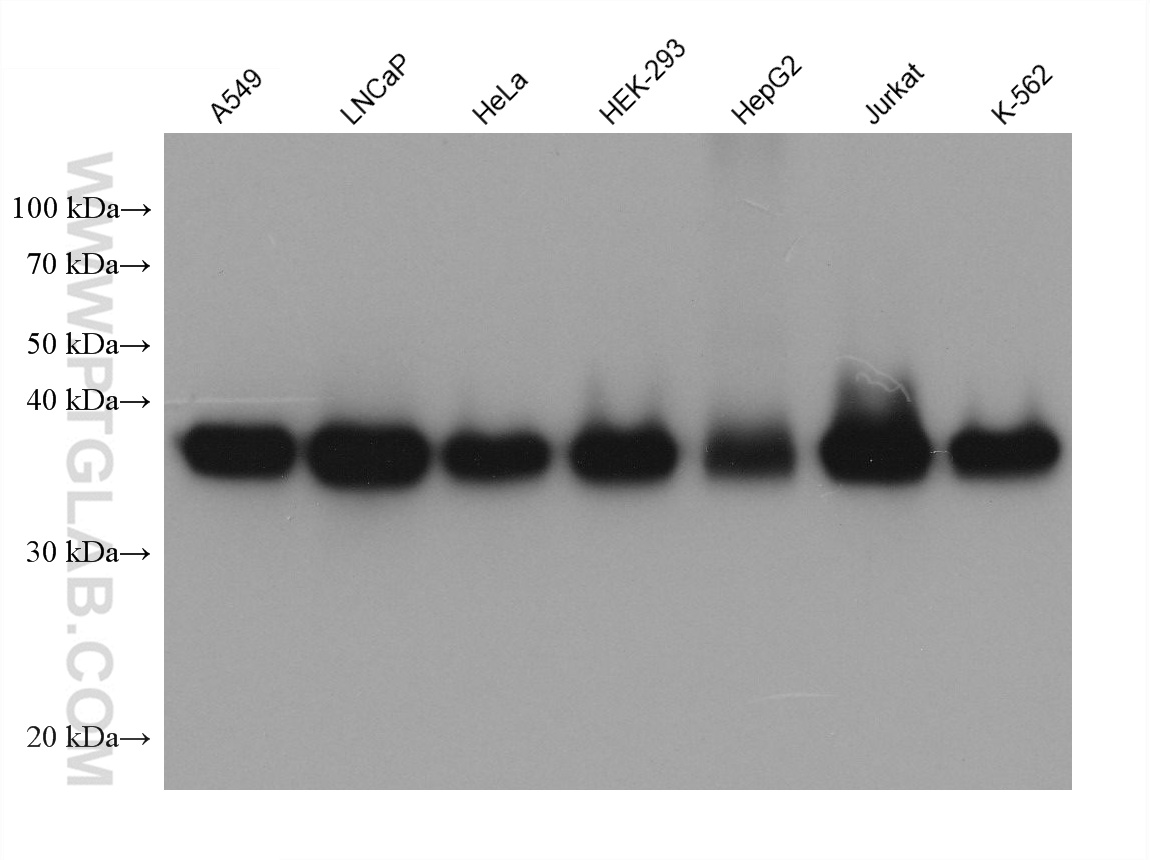验证数据展示
产品信息
68507-1-PBS targets TEX264 as part of a matched antibody pair:
MP50870-1: 68507-1-PBS capture and 68507-2-PBS detection (validated in Cytometric bead array)
Unconjugated mouse monoclonal antibody pair in PBS only (BSA and azide free) storage buffer at a concentration of 1 mg/mL, ready for conjugation.
This conjugation ready format makes antibodies ideal for use in many applications including: ELISAs, multiplex assays requiring matched pairs, mass cytometry, and multiplex imaging applications.Antibody use should be optimized by the end user for each application and assay.
| 经测试应用 | WB, Cytometric bead array, Indirect ELISA Application Description |
| 经测试反应性 | human |
| 免疫原 | TEX264 fusion protein Ag33710 种属同源性预测 |
| 宿主/亚型 | Mouse / IgG1 |
| 抗体类别 | Monoclonal |
| 产品类型 | Antibody |
| 全称 | testis expressed 264 |
| 别名 | UNQ337/PRO536, TEX 264, Testis-expressed protein 264, TEG 264, SIG11 |
| 计算分子量 | 313 aa, 34 kDa |
| 观测分子量 | 37 kDa |
| GenBank蛋白编号 | BC008742 |
| 基因名称 | TEX264 |
| Gene ID (NCBI) | 51368 |
| 偶联类型 | Unconjugated |
| 形式 | Liquid |
| 纯化方式 | Protein G purification |
| UNIPROT ID | Q9Y6I9 |
| 储存缓冲液 | PBS only , pH 7.3 |
| 储存条件 | Store at -80°C. The product is shipped with ice packs. Upon receipt, store it immediately at -80°C |
背景介绍
TEX264 (testes expressed gene 264) is a single-pass transmembrane protein, consisting of an N-terminal hydrophobic region, a gyrase inhibitory (GyrI)-like domain, and a loosely structured C terminus. TEX264 was first identified as an endoplasmic reticulum (ER)-resident Atg8-family-binding protein that mediates the degradation of portions of the ER during starvation (i.e., reticulophagy). TEX264 was identified as a cofactor of VCP/p97 ATPase that promotes the repair of covalently trapped TOP1 (DNA topoisomerase 1)-DNA crosslinks.

